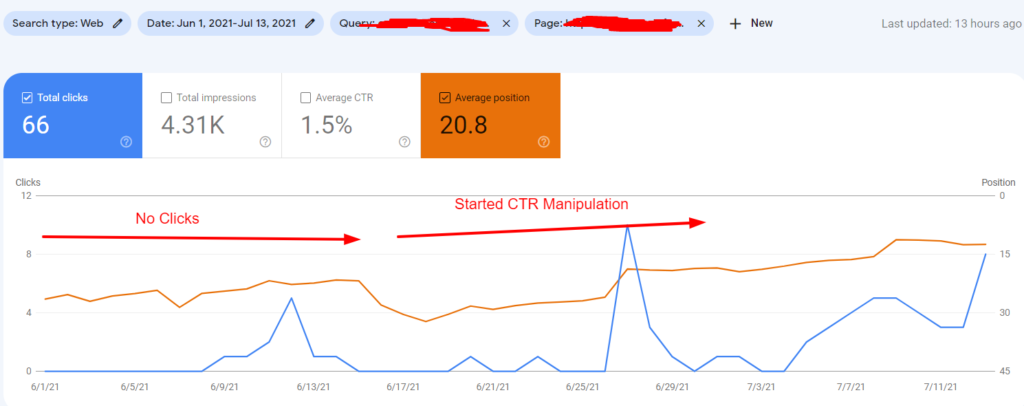CTR Manipulation Press Release-- Revealing New Techniques for CTR Optimization
CTR Manipulation Press Release-- Revealing New Techniques for CTR Optimization
Blog Article
CTR Adjustment: A Game Changer for Digital Campaigns
The rise of CTR control has actually undoubtedly changed digital marketing strategies, providing marketers with tools to boost engagement and drive web traffic successfully. What effects might this balancing act hold for the future of digital campaigns?
Recognizing CTR Control
Although click-through rate (CTR) manipulation may appear like an uncomplicated technique in digital advertising and marketing, it incorporates a series of approaches intended at synthetically pumping up involvement metrics. This control can take numerous kinds, consisting of the use of click ranches, robots, or deceitful advertisement positionings that deceive consumers into clicking. These approaches can endanger the stability of performance data, making it challenging for marketing professionals to evaluate the real effectiveness of their campaigns.
Furthermore, CTR adjustment increases ethical problems, as it threatens the transparency of digital marketing. The reliance on inflated metrics can result in misdirected advertising and marketing choices, skewing source allocation and project techniques. Subsequently, services may spend greatly in channels and tactics that appear successful but do not produce real engagement or conversions.

Benefits of Click-Through Price Optimization
Maximizing click-through price (CTR) is essential for boosting the performance of digital advertising campaigns. A greater CTR indicates that a bigger percentage of individuals are involving with the web content, which can bring about boosted web site traffic and far better conversion prices. By enhancing CTR, brand names can properly allocate their advertising resources to campaigns that generate the highest returns.
Among the main advantages of CTR optimization is the capacity for boosted ad placement and lower expenses - CTR Manipulation. Platforms like Google Advertisements award greater CTRs with much better ad positioning and minimized cost-per-click (CPC), allowing online marketers to extend their budget plans better. In addition, a well-optimized CTR can enhance brand name exposure, as greater engagement prices commonly correlate with boosted natural reach

Techniques for Reliable CTR Adjustment
To effectively adjust click-through rates (CTR), marketing professionals can use a variety of tactical techniques that enhance individual involvement and drive website traffic. One essential method is optimizing ad copy to produce engaging and action-oriented language. CTR Manipulation. Making use of strong call-to-action (CTA) phrases encourages individuals to take prompt action, boosting the possibility of clicks
Another reliable method is click here for more info A/B screening, which enables online marketers to contrast various advertisement variations. By systematically assessing next page performance metrics, they can recognize which aspects reverberate best with the target market, thereby fine-tuning their approaches for maximum effect. In addition, leveraging visually enticing graphics and succinct messaging can capture focus quickly, making it extra likely that individuals will engage.

Lastly, optimizing landing web pages to make sure a seamless customer experience can minimize bounce rates and urge additional interaction, eventually fostering greater CTR. By integrating these techniques, online marketers can properly adjust CTR to attain their project purposes.
Gauging Success in Digital Projects
Measuring success in digital campaigns requires a clear understanding of crucial efficiency indications (KPIs) that align with campaign goals. KPIs offer as measurable metrics that aid examine the efficiency of different strategies utilized throughout the campaign. Usual KPIs include click-through prices (CTR), conversion rates, expense per acquisition (CPA), and return on financial investment (ROI)
To effectively determine success, it is important to establish particular, measurable goals initially of the project. For instance, if the main goal is to raise brand understanding, metrics such as impressions and engagement prices may be focused on. On the other hand, projects concentrated on straight sales would take advantage of an extra detailed evaluation of conversion rates and profits generated.
Routine evaluation of these KPIs makes it possible for marketing professionals to make data-driven decisions, maximizing their techniques in real-time. Making use of analytical tools can help in monitoring performance and recognizing trends, permitting speedy adjustments to improve project results. Eventually, a thorough technique to determining success not only highlights areas for enhancement but also strengthens the total effectiveness of electronic advertising initiatives, driving sustained growth and involvement in the long-term.
Future Trends in Digital Advertising And Marketing
Anticipating the future of electronic advertising exposes a landscape shaped by fast technical improvements and altering consumer habits. As man-made reference intelligence and artificial intelligence proceed to progress, marketing professionals will significantly take advantage of these innovations to customize projects at an unprecedented scale. Predictive analytics will certainly enable brand names to anticipate customer demands, enhancing ad positionings and content delivery in real time.
Additionally, the surge of voice search and wise devices is changing how consumers communicate with digital material. Marketing experts will certainly need to adjust their approaches to ensure exposure throughout numerous systems, including voice-activated assistants. This shift requires an emphasis on conversational marketing, highlighting involvement through discussion instead than traditional advertising strategies.
In addition, privacy problems are prompting adjustments in data collection methods. Transparency and moral data use will come to be vital, driving brands to foster depend on and commitment among consumers. The ongoing development of social networks platforms will also affect advertising approaches, with an increased focus on authenticity and user-generated web content.
Verdict
In summary, CTR adjustment represents a substantial advancement in electronic marketing approaches, using instant benefits with enhanced engagement metrics. The ongoing evolution of electronic marketing will depend on this delicate interaction, forming the future landscape of brand-consumer communications.
Report this page